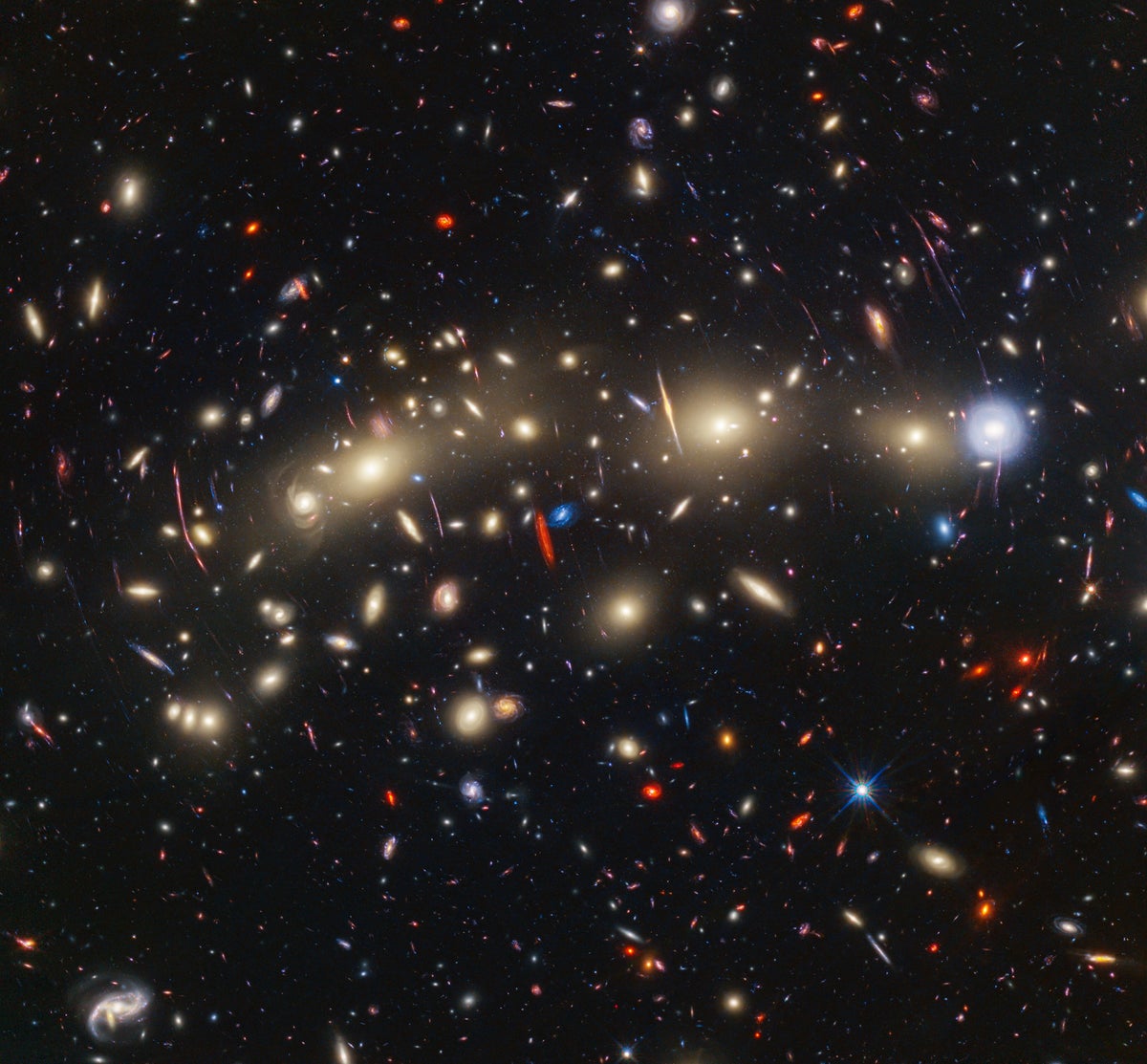In a groundbreaking development in the field of astronomy, researchers using the James Webb Space Telescope (JWST) have identified some of the best candidates yet for the universe’s first stars, known as Population III stars. These earliest stars are thought to have formed shortly after the Big Bang, arising from primordial hydrogen and helium gas that filled the young cosmos. Although their existence has long been theorized, direct evidence of these ancient stars has remained elusive—until now. The recent findings, while not definitive, represent the closest astronomers have come to observing these cosmic pioneers, shedding new light on the universe’s formative years.
Population III stars hold a special place in cosmic history. Unlike stars today, which contain heavier elements forged in previous generations of supernovae, these first stars formed from a virtually pristine mix of hydrogen and helium. They are believed to have been massive and extremely luminous, burning brightly but briefly before ending their lives in powerful supernova explosions. These cataclysmic events dispersed heavier elements such as carbon, oxygen, and iron into the surrounding space, seeding the universe with the raw materials necessary for the formation of subsequent generations of stars, planets, and ultimately, life. Understanding Population III stars is therefore crucial to piecing together the evolutionary story of the cosmos.
However, detecting Population III stars has been an immense challenge due to their great distance from Earth and the fleeting nature of their existence. JWST, launched with the specific goal of probing the distant universe in unprecedented detail, has provided astronomers with new tools to tackle this quest. The latest study focuses on a distant galaxy named LAP1-B, which lies over 13 billion light-years away. Observing objects at such staggering distances means looking back in time to when the universe was only a few hundred million years old, a period thought to coincide with the emergence of the first stars.
A critical aid in this discovery is the phenomenon of gravitational lensing, where the light from very distant galaxies is magnified by the gravitational field of a massive, closer galaxy cluster that lies along our line of sight. In this case, a galaxy cluster situated between Earth and LAP1-B acts as a giant cosmic lens, amplifying the faint light emitted by this ancient galaxy and making it observable by JWST’s sensitive instruments. This natural magnification has allowed astronomers to detect spectral signatures in the light from LAP1-B that hint at its unique composition.
The key piece of evidence supporting the presence of Population III stars in LAP1-B is the detection of helium emission lines without accompanying signatures of heavier elements. Since Population III stars formed from primordial gas, their host environments would be expected to lack metals—astronomical jargon for elements heavier than helium. The presence of helium but an apparent absence of heavier elements in LAP1-B aligns well with this expectation, suggesting that the galaxy’s stellar population may indeed include some of the universe’s first stars.
Despite the excitement, the discovery is not yet conclusive. The research team, whose findings were published in the Astrophysical Journal Letters in October 2025, acknowledge that alternative explanations remain possible. For example, the observed chemical composition could be due to exceptionally pristine clouds of gas within or around the galaxy, rather than actual Population III stars themselves. Furthermore, the enormous distance and faintness of the signals make it difficult to definitively rule out the presence of heavier elements, which could be below the detection threshold or obscured by other factors.
Astronomer Jorryt Matthee of the Institute of Science and Technology in Austria, who was not involved in the study, emphasized the significance of the findings while cautioning against overinterpretation. “This is the closest we are yet to finding the most ancient stars,” Matthee said, highlighting the importance of the research. However, he also noted the inherent challenges in proving the absence of heavy metals, especially given the observational limitations when dealing with such remote and faint objects. Matthee stressed that the absence of evidence is not the same as evidence of absence, underscoring the need for deeper and more detailed observations to confirm the nature of LAP1-B’s stellar population.
Future studies targeting LAP1-B and similar distant galaxies could provide stronger evidence to confirm the presence of Population III stars. For instance, the detection of an absence of oxygen—a key heavy element produced in large quantities by later generations of stars—would greatly bolster the argument that these galaxies harbor primordial stars. Such findings would have profound implications for our understanding of the early universe, including the

